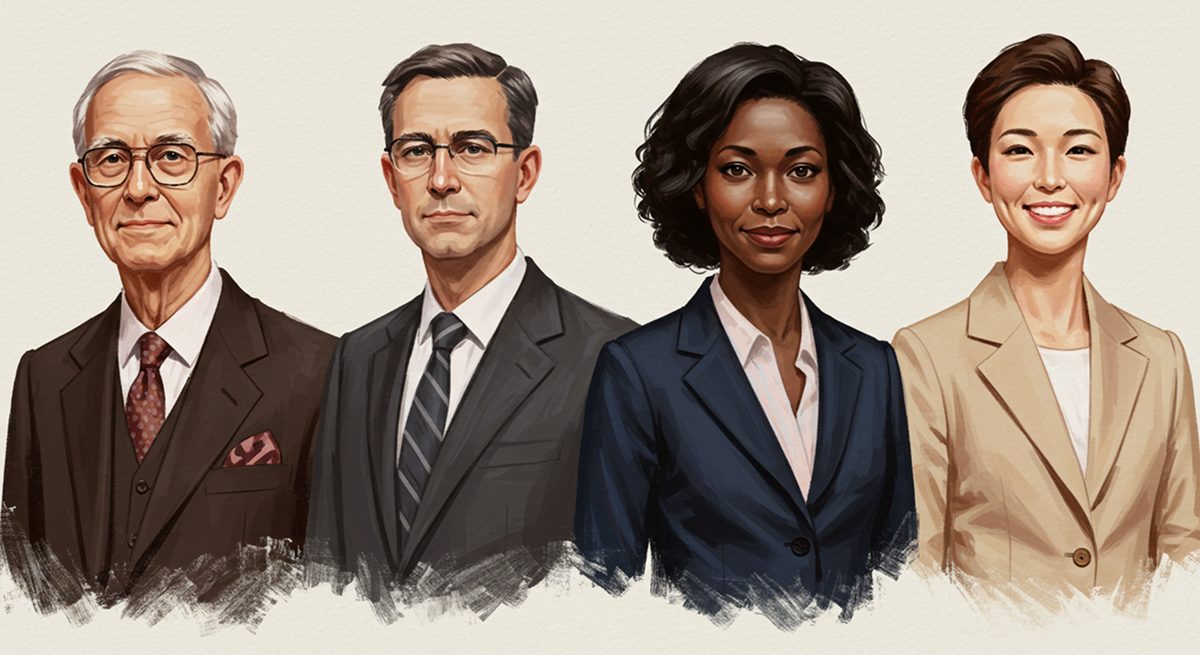Which Of These 4 Leadership Styles Are You?
Have you ever wondered what leadership style you belong to? It can really help with professional development when a person understands the different types of leadership styles, and also which category they fall into.
Diversity in the modern workplace calls for better international relations and more productive relationships in everyday business. Knowing your leadership style and what to expect from other leadership styles often expedites productivity and communication. Furthermore, when hiring new leaders, understanding leadership styles will also be valuable. At a philosophical level, the leadership styles are separated by specific directives, how open or directive a leader is and how competitive or collaborative they are. Understanding where someone fits into this matrix can give hiring managers a good idea of what to expect from their future performance as leaders.

Why is Leadership Style Important?
Because some positions grant power in a company, it is important to understand how the people in these positions can impact the rest of the company in terms of productivity and cohesiveness within teams. Each leadership style values different things. Some might feel it is non-negotiable to maintain ethical standards, while others might be more open to risk-taking if the benefit is large enough. For some leaders preserving relationships throughout the bargaining process is key to a well-negotiated agreement, whereas others can favor managing conflict over avoiding it.
Furthermore, things like professional etiquette, body language, coping mechanisms, and resilience might be determined by ideological perspectives, and in turn, these perspectives will place leaders into specific leadership categories. Suppose a company wants to create a culture steeped in support and creativity. In that case, selecting a candidate who fits into the diplomatic management style or the diplomatic style of leadership might do better than a pragmatist.
Diplomat Leadership Style
The first leadership style to explore is the diplomatic leadership style. Diplomatic leaders prize interpersonal harmony. A diplomatic leader is likely to form deep personal bonds with their team and is described as kind and giving. Their affiliative force and tendency to act as the social glue often keep their team together. Diplomatic leaders strive to resolve conflicts peacefully when they arise but would rather evade conflict altogether.
Most employees will likely prefer diplomatic leadership over other leaders, as working for a diplomatic leader tends to be more fun. Less emphasis is placed on challenge, and more emphasis is placed on people’s strengths. A calm working environment is essential to how diplomats work as it decreases anxiety and discomfort in the office. Employee satisfaction is very important to a diplomatic leader, which is achieved through traditional measures. While diplomatic leadership is a great leadership style to work under, we must remember that this only applies to the appropriate people. Some people might be more suited to working under another leadership style.
Of all the leadership styles, diplomatic leadership is the most common.
Pitfalls of Diplomatic Leaders
While the diplomatic leadership style can be the most fun to work for, there are also some pitfalls to leaders who fall into this style category. For example, when a team incorrectly prioritizes a task, it is difficult for diplomatic leaders to get their team back on track.

Pragmatic Leadership Style
Some leadership styles are more difficult to work with, as will likely be the case with the pragmatic leadership style. A pragmatic leader usually maintains high standards and will expect their high standards to be met. They are usually competitive, and this makes them driven to exceed their goals above all else. Pragmatists are not afraid to take risks, even when their colleagues may feel anxious or at risk of causing bad feelings.
Because they are often bold thinkers working for a pragmatist tends to be difficult, with high rewards for success. Pragmatists can be the best to learn from, but you will need to be thick-skinned. The line between burnout and exceptional intellectual growth must be carefully traversed when working with this kind of leader. This leadership style is the most common among executive leadership tiers but is far less common at lower levels.
Pitfalls of a Pragmatic Leader
While pragmatic leaders can excel at certain elements of executive jobs, like being a resilient negotiator or being the one who represents power, there are other elements that they might struggle with. For example, it is unlikely that pragmatist leaders will ever be viewed as the trusted adviser of their employees. They might also be too harsh and strict in ventures that involve making deals. This type of leadership is also only suited to specific workers who have thicker skins and are more driven to exceed.

Steward Leadership Style
Stewards are the stabilizing and calming forces in the organization. A good manager belonging to this leadership style values cooperation and rules. They often devote time to solving problems within their team so that the team can function optimally. Everyone needs to be on the same page, and common ground is a good place to start when you need to solve problems within a cohesive group. These leaders often owe it to their personal credit they will make sure that team members who struggle are supported and helped to better themselves so that the chain can be as strong as possible.
Working for a Steward offers little room for individuality and does not generally allow anyone to stand out above the rest. It offers a foundation for team-based success and learning how to work more cohesively with those around you.
Pitfalls of a Steward Leader
Steward leaders can find it difficult to manage conflict between two disagreeing parties in their teams. While they have much in common with leaders in the diplomatic leadership style, there are some important differences, specifically their need for the team to function optimally as much as possible. It makes individuality difficult, which can be good for some industries but detrimental to others; for example, the marketing department in a local media outlet might do better with creative teams that have high levels of individuality to keep the creative drive high.

Idealist Leadership Style
Of all the leadership styles, the Idealists believe most strongly in the positive potential of those around them. They are characterized as high-energy achievers who want everyone on their team to grow and learn. Idealist leaders are usually easy to get along with and prize creativity in their teams.
They also allow for self-expression and development, representing interests that can help the team to build productive relationships. Structure and process can be somewhat lacking in this style of leadership, but finding common ground and a positive work environment would be easy.
Pitfalls of an Idealist Leader
Idealist leaders are usually fluent verbally and good at speaking publicly because they are charismatic and likeable. However, they might be too much for reserved employees who perform best on their own and out of the spotlight. They also find it difficult to create and maintain rigorous structures. This can make it difficult for them to maintain order in overlapping roles.

Why should I raise awareness of my leadership style?
Knowing leadership styles within your organization can be largely beneficial, especially when deciding who is best suited to tasks (for example, selecting a representative to assist constituents). Furthermore, because there is a general understanding that the diplomatic leadership style is the most popular, there is likely an expectation that most leaders will be diplomatic leaders. It is always best not to assume this without at least some probing questions that can help to distinguish diplomatic leadership from other leadership styles. We must also remember that some work environments and teams might be suited better to a specific leadership style than to others. Knowing this during the hiring process can help hiring managers to make more informed decisions about which candidates to focus on.
Keller offers an array of services aimed at strengthening, evaluating, and developing leadership capabilities within the company. Contact us today and discover how our leadership assessments can help your business succeed.










